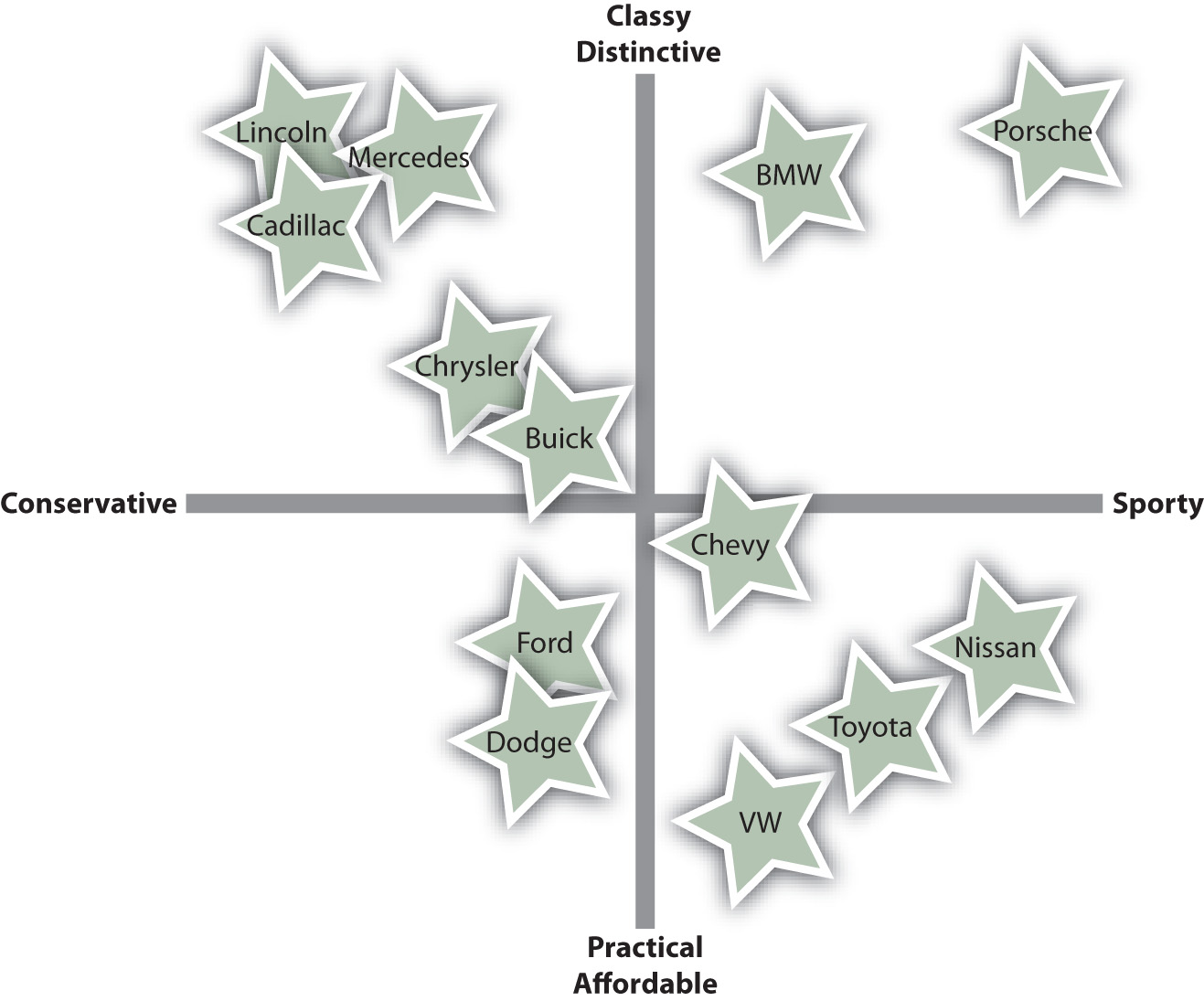Chapter 5: Market Segmenting, Targeting, and Positioning
5.4 Positioning and Repositioning Offerings
Learning Objectives
- Explain why positioning is an important element when it comes to targeting consumers.
- Describe how a product can be positioned and mapped.
- Explain what repositioning is designed to do.
Why should buyers purchase your offering versus another? If your product faces competition, you will need to think about how to “position” it in the marketplace relative to competing products. Positioning is how consumers perceive a product relative to the competition. Companies want to have a distinctive image and offering that stands out from the competition in the minds of consumers.
One way to position your product is to plot customer survey data on a perceptual map. A perceptual map is a two-dimensional graph that visually shows where your product stands, or should stand, relative to your competitors, based on criteria important to buyers. The criteria can involve any number of characteristics—price, quality, level of customer service associated with the product, and so on. An example of a perceptual map is shown in figure 5.5. To avoid head-to-head competition with your competitors, you want to position your product somewhere on the map where your competitors aren’t clustered.

Many companies use taglines in their advertising to try to position their products in the minds of the buyer—where they want them, of course. A tagline is a catchphrase designed to sum up the essence of a product. You perhaps have heard Subway’s tagline “Eat Fresh.” The tagline is designed to set Subway apart from restaurants like McDonald’s and Burger King—to plant the idea in consumers’ heads that Subway’s offerings are less “fast foodish,” given the negative connotation fast food has these days.
Sometimes firms find it advantageous to reposition their products—especially if they want the product to begin appealing to different market segments. Repositioning is an effort to ‘move’ a product to a different place in the minds of consumers. The company below (figure 5.6) is expanding the market to include other buyers that previously wouldn’t have considered their housing product (“Clayton i-house,” 2009).[1]

Recently, Porsche unveiled its new line of Panamera vehicles at a Shanghai car show. The car is a global model, but, unlike Porsche’s other cars, it’s longer. Why? Because wealthy car buyers in China prefer to be driven by chauffeurs (Gapper, 2009).[2] How do you think Porsche is trying to reposition itself for the future?
Key Takeaways
If a product faces competition, its producer will need to think about how to “position” it in the marketplace relative to competing products. Positioning is how consumers view a product relative to the competition. A perceptual map is a two-dimensional graph that visually shows where a product stands, or should stand, relative to its competitors, based on criteria important to buyers. Sometimes firms find it advantageous to reposition their products. Repositioning is an effort to “move” a product to a different place in the minds of consumers.
Review and Reflect
- Why do companies position products?
- Explain what a tagline is designed to do.
- Why might an organization reposition a product?
Media Attributions
- Perceptual Map: Cars © Mydogategodshat adapted by University of Minnesota Libraries Publishing is licensed under a CC BY-NC-SA (Attribution NonCommercial ShareAlike) license
- The Clayton i-House © University of Minnesota Libraries Publishing is licensed under a CC BY-NC-SA (Attribution NonCommercial ShareAlike) license
- Clayton i-house giant leap from trailer park. (2009, May 6). Knoxvillebiz.com. Accessed July 31, 2023. ↵
- Gapper, J. (2009, April 23). Why brands now rise in the East. Financial Times, 9. ↵
how consumers perceive a product relative to the competition
a two-dimensional graph that visually shows where your product stands relative to your competitors based on criteria important to buyers
a catchphrase designed to sum up the essence of a product
an effort to 'move' a product to a different place in the minds of consumers

